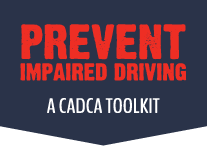Definitions and Examples of the 7 Strategies for Community Change
Coalitions must develop and implement a diverse range of strategies and interventions in order to create population-level change in their communities. While many prevention strategies focus on raising public awareness and helping individuals make healthy choices, lasting behavioral change requires a focus on community systems, policies and local conditions to affect the environment in which substance abuse and related problems like impaired driving occurs.
The “7 Strategies for Community Change” provides a tool for coalitions to think comprehensively about how to address the specific local conditions that are creating risk for the problems that have been identified through community assessment and problem analysis. The 7 strategies work together to address the specific diagnosis the coalition has identified. Click on the buttons below to view examples that may help generate ideas for a comprehensive plan that aligns with the problems, root causes and local conditions that you have identified.
PROVIDE INFORMATION ENHANCE SKILLS PROVIDE SUPPORT CHANGE ACCESS & BARRIERS CHANGE CONSEQUENCES CHANGE PHYSICAL DESIGN MODIFY & CHANGE POLICIES

